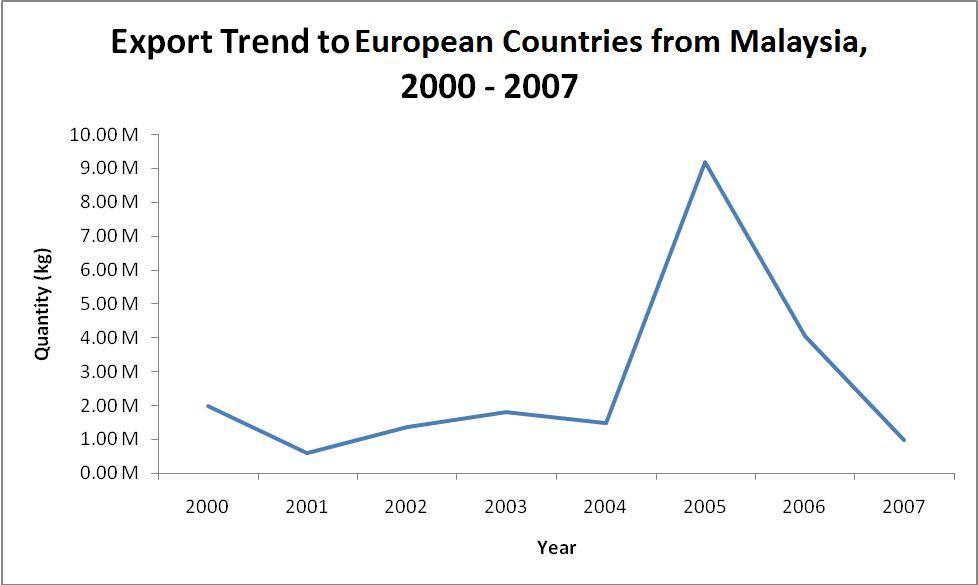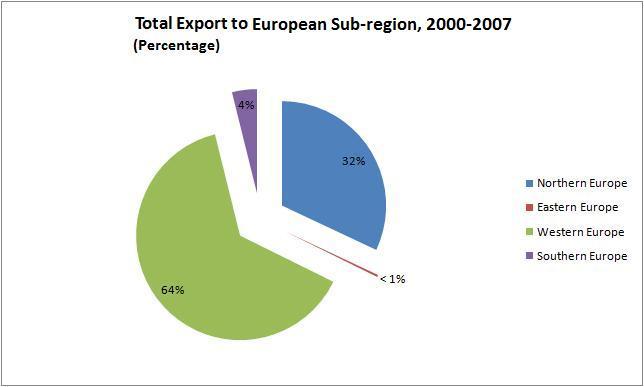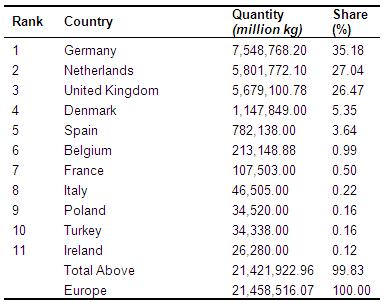6.1.2 European Region
Europe was the second largest importer of Malaysia’s export trade in herbal raw material throughout the observed period. In the initial years, the quantities of raw materials exported were relatively low. From year 2004 to 2005 there was a sudden increase in the total amount of raw materials exported to the European countries however, the amount abruptly declined thereafter. The sudden surge in the trend in 2005 could be due to several factors such as there was an increasing awareness of the benefits of natural ingredients in the region and also the growing demands for processed health products. Major raw materials exported to this region that of other alkaloids of cinchona and their derivatives and salts, garlic, ginger, other spices and mace. Refer to Appendix 5 (Europe: Export of herbal raw material and aromatic plants 2000-2007 by country)
Export Trend

Percentage of Export to Countries of Destination in the European Region
The 4 sub regions of the European Regions are the Northern, Eastern, Western and Southern sub-region. Western Europe accounted for 64% of Malaysia’s total export of herbal raw materials to the region, while Northern Europe and Southern Europe imported 32% and 4% respectively. Less than 1% of were exported to Eastern Europe. See the pie-chart at Figure 227.
Amongst the 11 export destinations countries in this region, Germany imported the highest quantity of the raw materials which represented about 35.2% of the total export from Malaysia to the European region. Netherland and United Kingdom imported about 27% and 26.5% respectively. The other countries imported less than 10% each. The quantities exported and the percentages of import for each country are shown in Table 174.

Leading Importing Countries of the European Sub-Regions

Germany imported large amounts of other alkaloids of cinchona and their derivatives and salts, some mace and cloves while other raw materials were imported in relatively small amounts. Netherlands also imported large amounts of other alkaloids of cinchona and their derivatives, salts, ginger and small amounts of the other items. Main imports of the United Kingdom consisted of some amounts of other spices and seeds of anise or bardian.



